VITILIGO AND PHYSIOTHERAPY
DEFINATION of VITILIGO –
Vitiligo is a long-term problem in which growing patches of skin lose their color. It can affect people of any age, gender, or ethnic group.
The patches appear when melanocytes within the skin die off. Melanocytes are the cells responsible for producing the skin pigment, melanin, which gives skin its color and protects it from the sun’s UV rays.
Globally, it appears to affect between 0.5 and 2 percent of people.
Fast facts on vitiligo
Vitiligo can affect people of any age, gender, or ethnicity.
There is no cure, and it is usually a lifelong condition.
The exact cause is unknown, but it may be due to an autoimmune disorder or a virus.
Vitiligo is not contagious.
Treatment options may include exposure to UVA or UVB light and depigmentation of the skin in severe cases.
VITILIGO
Vitiligo causes melanocytes to die, leaving patches of pale skin.
Vitiligo is a skin condition in which patches of skin loses their color.
The total area of skin that can be affected by vitiligo varies between individuals. It can also affect the eyes, the inside of mouth, and the hair. In most cases, the affected areas remain discolored for the rest of the person’s life.
The condition is photosensitive. This means that the areas that are affected will be more sensitive to sunlight than those that are not.
It is hard to predict whether the patches will spread, and by how much. The spread might take weeks, or the patches might remain stable for months or years.
The lighter patches tend to be more visible in people with dark or tanned skin.
CAUSES
The exact causes of vitiligo are unclear. A number of factors may contribute.
These include:
- an autoimmune disorder, in which the immune system becomes overactive and destroys the melanocytes
- a genetic oxidative stress imbalance
- a stressful event
- harm to the skin due to a critical sunburn or cut
- exposure to some chemicals
- a neural cause
- heredity, as it may run in families
- a virus
- Vitiligo is not contagious. One person cannot catch it from another.
It can appear at any age, but studies suggest that it is more likely to start around the age of 20 years.
SYMPTOMS
The only symptom of vitiligo is the appearance of flat white spots or patches on the skin. The first white spot that becomes noticeable is often in an area that tends to be exposed to the sun.
It starts as a simple spot, a little paler than the rest of the skin, but as time passes, this spot becomes paler until it turns white.
The patches are irregular in shape. At times, the edges can become a little inflamed with a slight red tone, sometimes resulting in itchiness.
Normally, however, it does not cause any discomfort, irritation, soreness, or dryness in the skin.
The effects of vitiligo vary between people. Some people may have only a handful of white dots that develop no further, while others develop larger white patches that join together and affect larger areas of skin.
TYPES
There are two types of vitiligo, non-segmental and segmental.
NON-SEGMENTAL VITILIGO
If the first white patches are symmetrical, this suggests a type of vitiligo known as non-segmental vitiligo. The development will be slower than if the patches are in only one area of the body.
Non-segmental vitiligo is the most common type, accounting for up to 90 percent of cases.
The patches often appear equally on both sides of the body, with some measure of symmetry. They often appear on skin that is commonly exposed to the sun, such as the face, neck, and hands.
Common areas include:
- backs of the hands
- arms
- eyes
- knees
- elbows
- feet
- mouth
- armpit and groin
- nose
- navel
- genitals and rectal area
However, patches can also appear in other areas
Non-segmental vitiligo is further broken down into sub-categories:
Generalized: There is no specific area or size of patches. This is the most common type.
Acrofacial: This occurs mostly on the fingers or toes.
Mucosal: This appears mostly around the mucous membranes and lips.
Universal: Depigmentation covers most of the body. This is very rare.
Focal: One, or a few, scattered white patches develop in a discrete area. It most often occurs in young children.
SEGMENTAL VITILIGO
Segmental vitiligo spreads more rapidly but is considered more constant and stable and less erratic than the non-segmental type. It is much less common and affects only about 10 percent of people with vitiligo. It is non-symetrical.
It is more noticeable in early age groups, affecting about 30 percent of children diagnosed with vitiligo.
Segmental vitiligo usually affects areas of skin attached to nerves arising in the dorsal roots of the spine. It responds well to topical treatments.
COMPLICATIONS
Vitiligo does not develop into other diseases, but people with the condition are more likely to experience
painful sunburn
- hearing loss
- changes to vision and tear production
- A person with vitiligo is more likely to have another autoimmune disorder, such as thyroid problems, Addison’s disease, Hashimoto’s thyroiditis, type 1 diabetes, or pernicious anemia. Most people with vitiligo do not have these conditions, but tests may be done to rule them out.
OVERCOMING SOCIAL CHALLENGES
If the skin patches are visible, the social stigma of vitiligo can be difficult to cope with. Embarrassment can lead to problems with self-esteem, and in some cases, anxiety and depression can result.
People with darker skin are more likely to experience difficulties, because the contrast is greater. In India, vitiligo is known as “WHITE LEPROSY.”
Increasing awareness about vitiligo, for example, by talking to friends about it, can help people with the condition to overcome these difficulties. Connecting with other who have vitiligo may also help.
Anyone with this condition who experiences symptoms of anxiety and depression should ask their dermatologist to recommend someone who can help.
#How Doctor Diagnosis The Vitiligo ?
Usually Physical Examination Of The Patient is Enough For Doctor’s to Diagnose vitiligo.
#Medical Treatment :
There is no particular treatment is available but improve the skin appreance by using corticosteroids and cosmetics. Use of Ultra Violate Radiation ( UVR) Therapy useful re-pigmenting the white skin.
Skin Grafting is other surgical option rarely used.
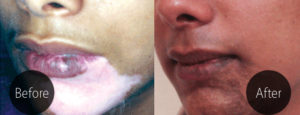
#PHYSIOTHERAPY TREATMENT
Sometimes the best treatment for vitiligo is no treatment at all. In fair-skinned individuals, avoiding tanning of normal skin can make areas of vitiligo almost unnoticeable because the (no pigment) white skin, of vitiligo has no natural protection from sun. These areas are easily sunburned, and people with vitiligo have an increased risk to skin cancer. They should wear a sunscreen with a SPF of at least 30 should be used on all areas of vitiligo not covered by clothing. Avoid the sun when it is most intense to avoid burns.
Disguising vitiligo with make-up, self-tanning compounds or dyes is a safe, easy way to make it less noticeable. Waterproof cosmetics to match almost all skin colors are available. Stains that dye the skin can be used to color the white patches to more closely match normal skin color. These stains gradually wear off. Self-tanning compounds contain a chemical called dihydroxyacetone that does not need melanocytes to make the skin a tan color. The color from self-tanning creams also slowly wears off. None of these change the disease, but they can improve appearance. Micropigmentation tatooing of small areas may be helpful.
If sunscreens and cover-ups are not satisfactory, your doctor may recommend other treatment. Treatment can be aimed at returning normal pigment (re-pigmentation) or destroying remaining pigment (depigmentation). None of the re-pigmentation methods are permanent cures.
TREATMENT OF VITILIGO DISEASE IN CHILDREN
Aggressive treatment is generally not used in children. Sunscreen and cover-up measures are usually the best treatments. Topical corticosteroids can also be used, but must be monitored. PUVA is usually not recommended until after age 12, and then the risks and benefits of this treatment must be carefully weighed.
REPIGMENTATION THERAPY
Topical Corticosteroids — Creams containing corticosteroid compounds can be effective in returning pigment to small areas of vitiligo disease. These can be used along with other treatments. These agents can thin the skin or even cause stretch marks in certain areas. They should be used under your dermatologist’s care.
PUVA FOR VITILIGO :
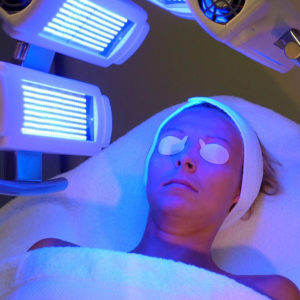
PUVA is a form of repigmentation therapy where a type of medication known as psoralen is used. This chemical makes the skin very sensitive to light. Then the skin is treated with a special type of ultraviolet light call UVA. Sometimes, when vitiligo is limited to a few small areas, psoralens can be applied to the vitiligo areas before UVA treatments. Usually, however, psoralens are given in pill form. Treatment with PUVA has a 50 to 70% chance of returning color on the face, trunk, and upper arms and upper legs. Hands and feet respond very poorly. Usually at least a year of twice weekly treatments are required. PUVA must be given under close supervision by your dermatologist. Side effects of PUVA include sunburn-type reactions. When used long-term, freckling of the skin may result and there is an increased risk of skin cancer. Because psoralens also make the eyes more sensitive to light, UVA blocking eyeglasses must be worn from the time of exposure to psoralen until sunset that day to prevent an increased risk of cataracts. PUVA is not usually used in children under the age of 12, in pregnant or breast feeding women, or in individuals with certain medical conditions.
NARROW BAND UVB (NBUVB)
This is a form of photo-therapy that requires the skin to be treated two, sometimes three, times a week for a few months. At this time this form of treatment is not widely available. It may be especially useful in treating children with vitiligo disease.
GRAFTING
Transfer of skin from normal to white areas is useful for only a small group of vitiligo patients. It does not generally result in total return of pigment in treated areas.
OTHER TRETMENT OPTION
Other treatment options include a new topical class of drugs called immunomodulators. Due to their safety profile they may be useful in treating eyelids and children. Excimer lasers may be tried as well.
DEPIGMENTATION THERAPY
For some patients with extensive involvement, the most practical treatment for vitiligo disease is to remove remaining pigment from normal skin and make the whole body an even white color. This is done with a chemical called monobenzylether of hydroquinone . This therapy takes about a year to complete. The pigment removal is permanent.
Other Skin Disease Related Article :



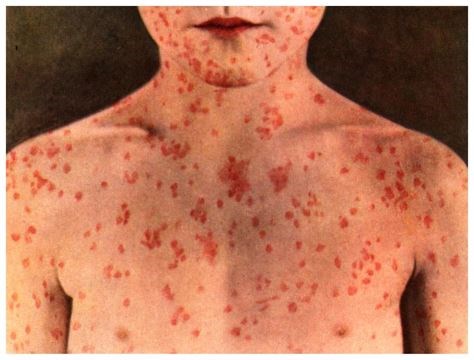

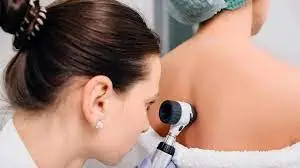
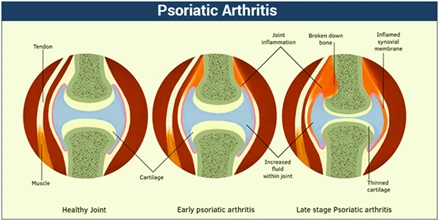
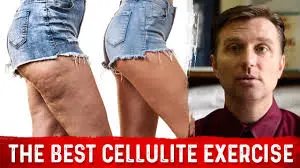

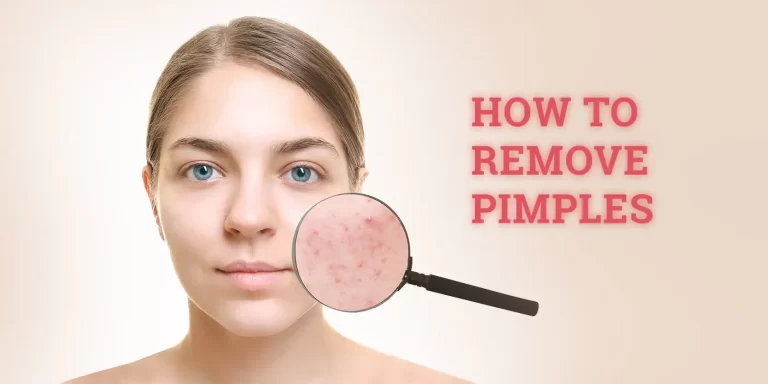

I want take treatment for vitiligo..
Please Contact us at our clinic